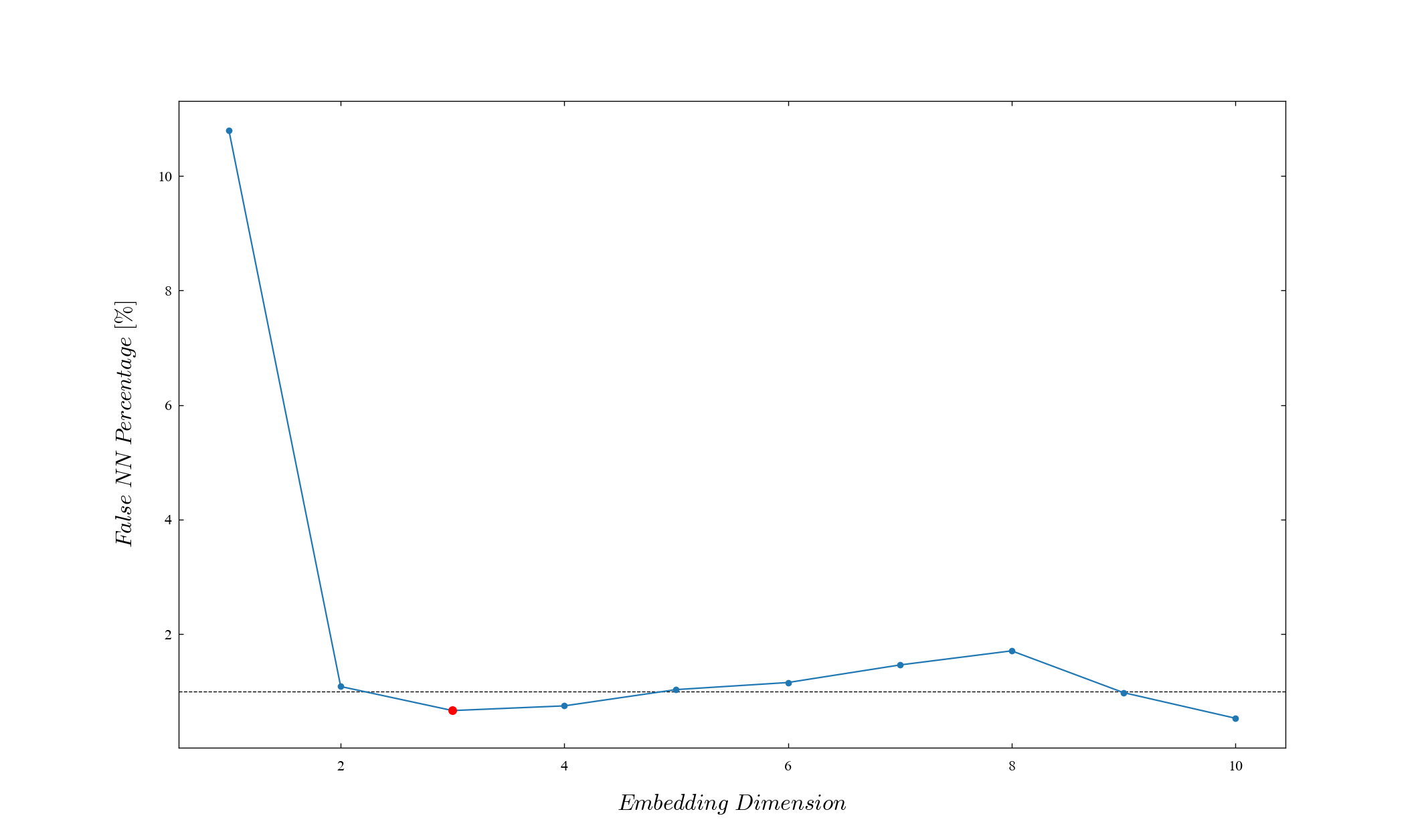-
Notifications
You must be signed in to change notification settings - Fork 1
Estimate the acceptable minimum embedding dimension
Estimate the acceptable minimum embedding dimension.
Estimate the acceptable minimum embedding dimension using False Nearest Neighbors Algorithm [Kennel_1992].
Select appropriately from the embedded data with dimension
, find the closest tangent vector
, and set the distance to
. It is embedded from 1 to
D_max.
Calculate the closest distance for all data. The points that satisfy the following two conditions are counted. (
threshold_A) and (
threshold_R) are thresholds.
is the standard deviation obtained from the time series.
Let the acceptable minimum embedding dimension be the first dimension below 1% (threshold_percent) in the percentages obtained for each embedded dimension.
By default, the actual calculation result is displayed. The point actually adopted is red. If you want to turn off the display, give plot=False.
from hundun.exploration import est_dimension_w_fnn- u_seq
- T
- D_max=10
- threshold_R=10
- threshold_A=2
- threshold_percent=1
- plot=True
- path_save_plot=None
- dimension
- percentages:
numpy.ndarray
Estimate the acceptable minimum embedding dimension for x in the Lorenz time series.
from hundun.equations import Lorenz
from hundun.exploration import est_dimension_w_fnn
x_seq = Lorenz.get_u_seq(25000)[::5, 0]
D, percentages = est_dimension_w_fnn(x_seq, T=10)
print(D)3
(1992) Matthew B. Kennel, Reggie Brown, and Henry D. I. Abarbanel
DOI: 10.1103/PhysRevA.45.3403
